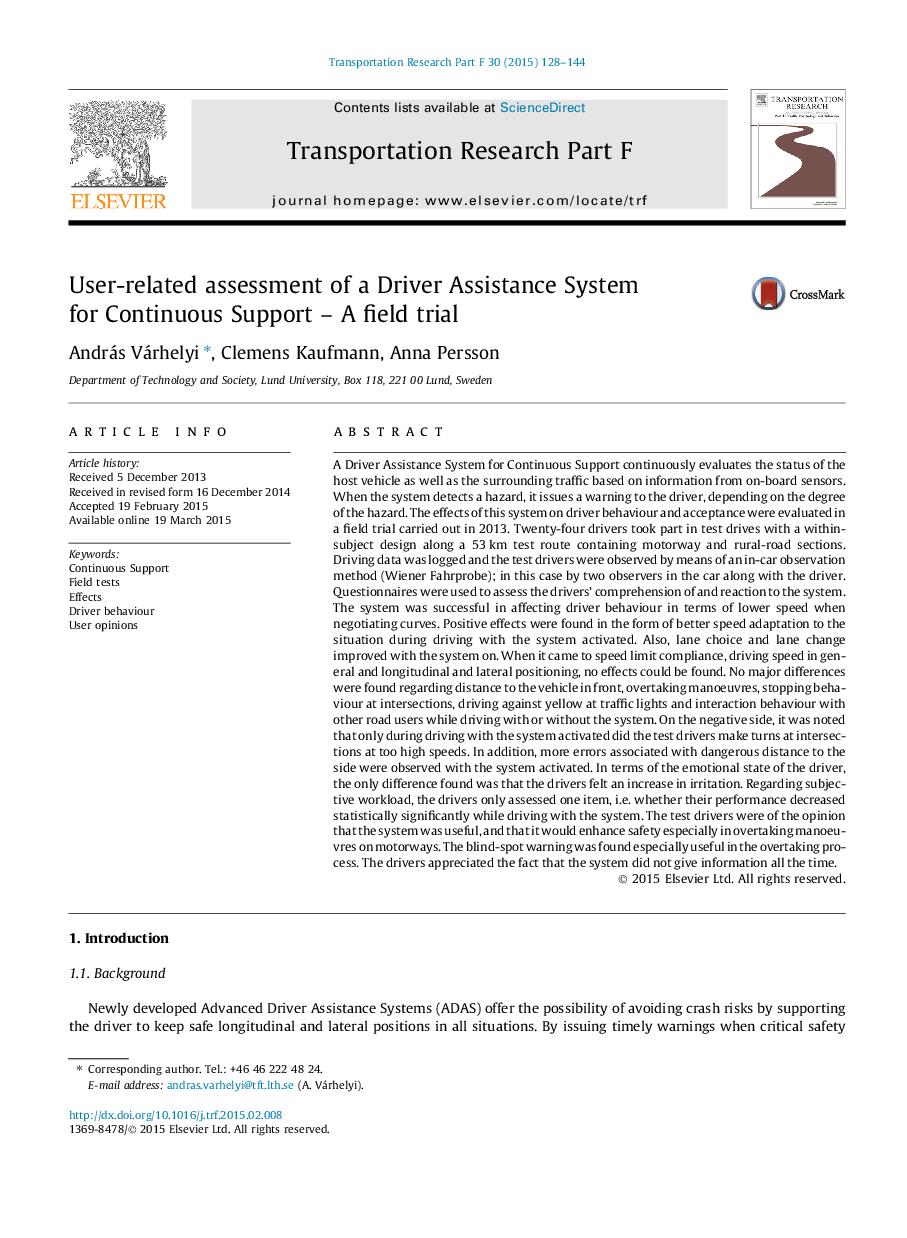| کد مقاله | کد نشریه | سال انتشار | مقاله انگلیسی | نسخه تمام متن |
|---|---|---|---|---|
| 897704 | 1472453 | 2015 | 17 صفحه PDF | دانلود رایگان |
• We assessed the effects of a Driver Assistance System for Continuous Support.
• We observed driver behaviour in a field trial and interviewed the drivers.
• Improvements were found in speed adaptation, lane change and lane keeping.
• Some behavioural adaptation effects were found too.
• The test drivers found the system useful and thought that it would enhance safety.
A Driver Assistance System for Continuous Support continuously evaluates the status of the host vehicle as well as the surrounding traffic based on information from on-board sensors. When the system detects a hazard, it issues a warning to the driver, depending on the degree of the hazard. The effects of this system on driver behaviour and acceptance were evaluated in a field trial carried out in 2013. Twenty-four drivers took part in test drives with a within-subject design along a 53 km test route containing motorway and rural-road sections. Driving data was logged and the test drivers were observed by means of an in-car observation method (Wiener Fahrprobe); in this case by two observers in the car along with the driver. Questionnaires were used to assess the drivers’ comprehension of and reaction to the system. The system was successful in affecting driver behaviour in terms of lower speed when negotiating curves. Positive effects were found in the form of better speed adaptation to the situation during driving with the system activated. Also, lane choice and lane change improved with the system on. When it came to speed limit compliance, driving speed in general and longitudinal and lateral positioning, no effects could be found. No major differences were found regarding distance to the vehicle in front, overtaking manoeuvres, stopping behaviour at intersections, driving against yellow at traffic lights and interaction behaviour with other road users while driving with or without the system. On the negative side, it was noted that only during driving with the system activated did the test drivers make turns at intersections at too high speeds. In addition, more errors associated with dangerous distance to the side were observed with the system activated. In terms of the emotional state of the driver, the only difference found was that the drivers felt an increase in irritation. Regarding subjective workload, the drivers only assessed one item, i.e. whether their performance decreased statistically significantly while driving with the system. The test drivers were of the opinion that the system was useful, and that it would enhance safety especially in overtaking manoeuvres on motorways. The blind-spot warning was found especially useful in the overtaking process. The drivers appreciated the fact that the system did not give information all the time.
Journal: Transportation Research Part F: Traffic Psychology and Behaviour - Volume 30, April 2015, Pages 128–144
